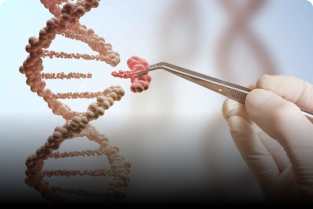The combination of genetic engineering and nanotechnology represents a groundbreaking frontier in science and medicine. These two fields, each transformative in its own right, have the potential to redefine what it means to be human. By merging genetic manipulation with nanoscale technologies, we could achieve enhancements in health, physical abilities, cognitive functions, and even longevity. But how far can these advancements take us, especially when applied to adult humans? Let’s explore the possibilities and limitations.
Genetic Engineering: Unlocking the Blueprint of Life
Genetic engineering involves the manipulation of DNA to correct defects, enhance traits, or introduce new capabilities. Tools like CRISPR-Cas9 have revolutionized this field, allowing precise editing of genetic sequences. For adult humans, genetic engineering could offer:
- Disease Prevention and Treatment: Correcting genetic mutations that cause diseases such as cystic fibrosis, sickle cell anemia, or certain cancers.
- Enhanced Immunity: Boosting the immune system to resist infections, including those caused by viruses and bacteria.
- Improved Physical Traits: Modifying genes related to muscle growth, endurance, or metabolism for enhanced physical performance.
- Cognitive Enhancements: Altering genes linked to memory, learning, and intelligence.
However, genetic modifications in adults are more challenging than in embryos due to the need to target trillions of cells effectively. Current research focuses on gene therapy, which introduces new genes to specific tissues or organs.
Nanotechnology: The Power of the Infinitesimal
Nanotechnology operates at the molecular level, designing and utilizing materials and devices on the nanometer scale. In human enhancement, nanotechnology could provide:
- Targeted Drug Delivery: Nanoparticles can deliver medications directly to diseased cells, minimizing side effects.
- Cellular Repair: Nanobots could repair damaged tissues or remove harmful substances from the body.
- Enhanced Senses: Nanodevices could improve vision, hearing, or other sensory capabilities.
- Longevity and Health Monitoring: Nanosensors implanted in the body could continuously monitor health metrics and intervene when abnormalities are detected.
Synergistic Potential: Combining Genetic Engineering and Nanotechnology
When combined, genetic engineering and nanotechnology could amplify each other’s capabilities, leading to unprecedented human enhancements. Here’s how:
- Precision Gene Editing: Nanotechnology could deliver genetic engineering tools like CRISPR-Cas9 with pinpoint accuracy to specific cells, improving efficiency and reducing risks.
- Real-Time Monitoring: Nanosensors could track the success of genetic modifications, ensuring desired outcomes and allowing for adjustments.
- Tissue Regeneration: By integrating genetic factors with nanomaterials, we could stimulate the growth of new tissues or organs.
- Enhanced Healing: Genetic engineering could accelerate natural healing processes, while nanotechnology provides the materials and tools to repair injuries at the cellular level.
Ethical and Practical Challenges
Despite the exciting possibilities, the integration of genetic engineering and nanotechnology raises several ethical and practical concerns:
- Safety Risks: Genetic modifications and nanodevices must be thoroughly tested to avoid unintended consequences.
- Accessibility: Advanced technologies may be prohibitively expensive, leading to inequalities in who can benefit.
- Ethical Dilemmas: Enhancing human abilities beyond natural limits could spark debates about fairness, identity, and the definition of humanity.
- Regulatory Hurdles: Governments and organizations must establish guidelines to ensure responsible use of these technologies.
How Much Can We Enhance?
The potential for human enhancement through genetic engineering and nanotechnology is vast but not limitless. While these technologies could significantly improve health, physical abilities, and cognitive functions, fundamental biological constraints may still apply. Moreover, enhancements in adult humans are likely to be more incremental compared to those achievable in early developmental stages.
In the near future, we may see breakthroughs such as:
- Resistance to chronic diseases and aging.
- Enhanced physical and mental performance.
- The ability to repair or replace damaged tissues and organs seamlessly.

